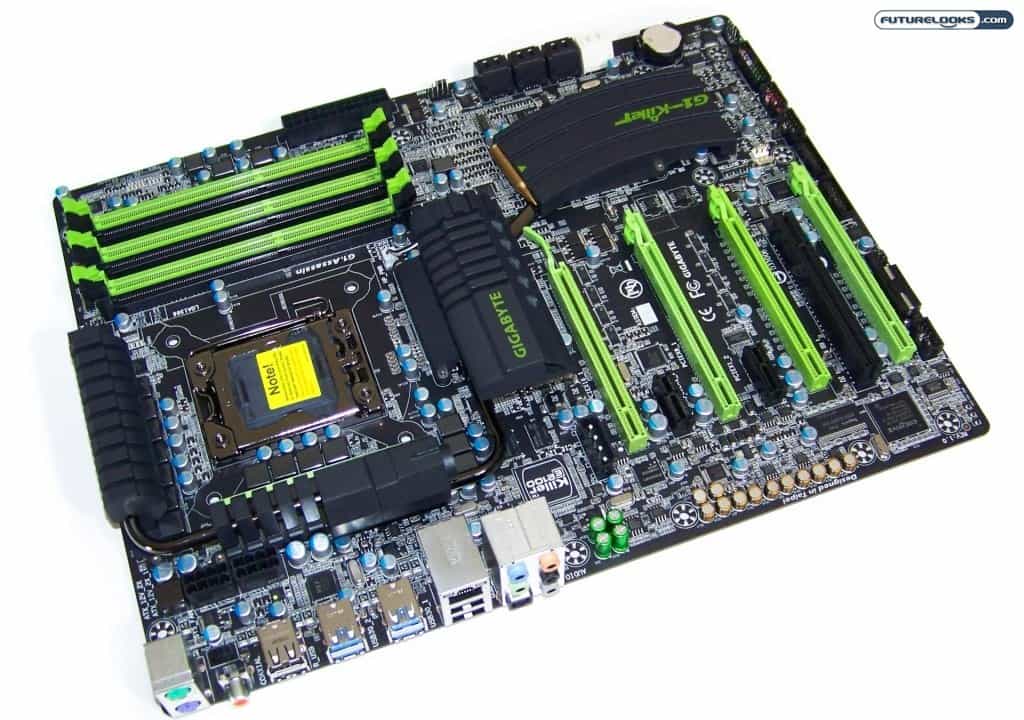Metro 2033
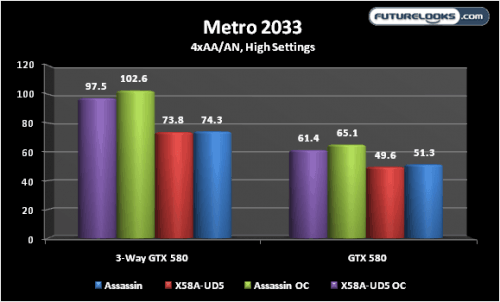
This game is truly our new “Crysis” as it is a very brutal benchmark. Cranking up the details makes both systems work harder whether running one or three video cards. It looks awesome and is still quite playable based on the results. Frame rates are comparable at default but separate once the system is overclocked.
Battlefield Bad Company 2
This is a game that is ridiculously unforgiving when it comes to online multi-player gaming. The game’s problematic code aside, its graphically intense game play relies heavily on a steady stream of data or else you miss frames. That said, here is what we got.
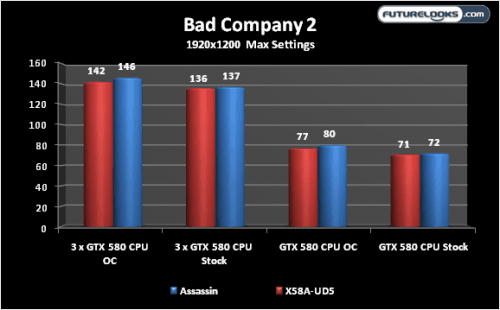
Frame rates are close at stock frequencies and diverge at overclocked frequencies if only by a few frames. What is really great is that the game sounds awesome thanks to the X-Fi high quality audio. Game sounds are more accurate all around. Plus, there are fewer “empty frames” due to lost data. The Killer E2100 does a better job of filling the screen with opponents whereas the standard Realtek NIC introduces some latency that we will get into in more detail.
Accurate G1 Assassin X-Fi Audio
In games, the X-Fi adds a much wider and clearer range of frequencies that can be experienced throughout the volumes range. The dedicated headphone amplifiers onboard are beastly and will easily max out any high quality headset up to 150 ohms or greater. The UD5’s integrated Realtek 889 simply can’t produce the same quality without distortion and line noise.
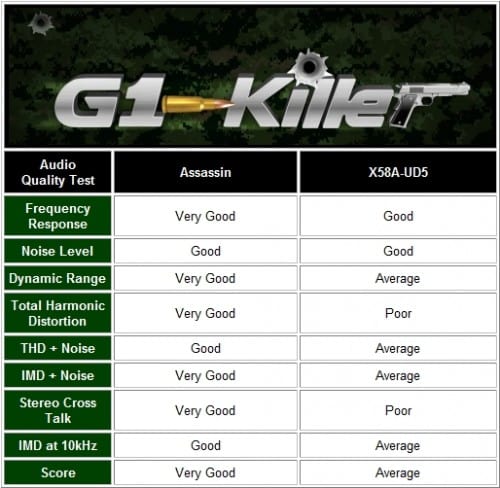
To quantify this, Right Mark Audio Analyzer gives us a score. Many of the good scores were just a hair’s edge from the next score up. With so little noise and high quality volume, you’re going to hear and experience a great deal more of your gaming environment which can give you a great advantage over your opponent.
G1 Assassin’s Killer Network in Action
It’s hard to know if the Killer E2100 actually helps unless you know what to expect. SANDRA’s network test helped explain why the Killer E2100 NPU is able to help fill in those “empty frames”. Those are frames of the environment you see in game, except it’s missing the opponent because the data didn’t arrive, or make it to your system in time. So, you magically find yourself looking up at your opponent.
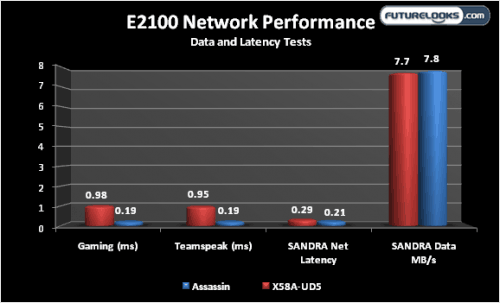
SANDRA revealed that regular network rates and latencies were very similar between the two boards. Both offer about 7.7 to 7.8 MB/s data rates with the Killer at .21 and UD5 at .24ms latencies. Anything you do on the web like torrents, FTPs, and file downloads won’t be any faster for either, which is to be expected.
However, there is a huge difference in latencies and resource loads when gaming. The E2100 actually dropped to .19 ms during its peak use when gaming and using a Teamspeak (VOIP) client. The UD5’s latency never dropped below .95ms running a single game or running Teamspeak by itself. The Realtek also relied on system memory and CPU resources when active. The E2100 NPU requires just a little collaborating with the CPU and power from the board to operate.
The Killer E2100 automatically prioritized the game data to level 1 and everything else down the network food chain which magically helped fill in some frames. Keep in mind that the farther away from the server, the higher the chance for missing game data. While it can’t completely prevent internet packet loss or fix games with the most poorly coded hit detection, it noticeably fills in quite a few Bad Company 2 missing frames which alone is almost a freaking miracle.

